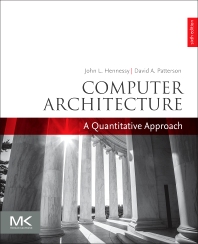Morgan Kaufmann
- 1st Edition
- Thomas Sterling + 2 more
- English

High Performance Computing
- 6th Edition
- John L. Hennessy + 1 more
- English

Computer Architecture
- 2nd Edition
- Dan C. Marinescu
- English

Cloud Computing
- 1st Edition
- Marco Gori
- English

Machine Learning
- 1st Edition
- Bertil Schmidt + 3 more
- English

Parallel Programming
- 5th Edition
- Khalid Sayood
- English

Introduction to Data Compression
- 1st Edition
- Dijiang Huang + 1 more
- English

Mobile Cloud Computing
- 2nd Edition
- Deep Medhi + 1 more
- English

Network Routing
- 1st Edition
- Michael Jesse Chonoles
- English

OCUP 2 Certification Guide
- 2nd Edition
- Vasilis F. Pavlidis + 2 more
- English

Three-Dimensional Integrated Circuit Design